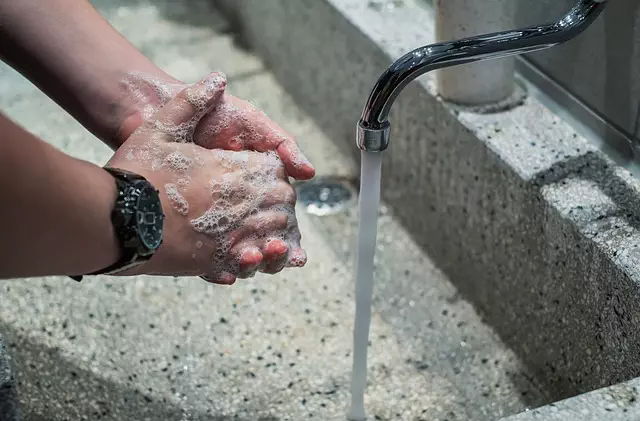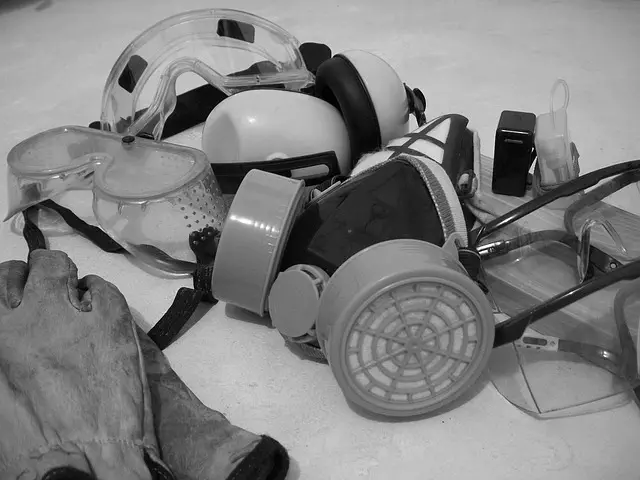Industrial Hygiene Services based in Toledo, Ohio, play a vital role in ensuring worker health and safety by maintaining optimal air quality in industrial settings through efficient ventilation systems. These services conduct comprehensive assessments of existing systems, focusing on their performance in capturing, transporting, and exhausting contaminants effectively. They adhere to stringent occupational safety standards and employ advanced monitoring technologies to detect hazardous substances, thereby preventing health complications. Regular evaluations and upgrade recommendations ensure that ventilation systems are not only performing optimally but also adaptable to new industry demands and technological advancements. This proactive approach helps in maintaining a robust workforce and aligns with broader Industrial Hygiene practices, ensuring regulatory compliance and promoting continuous improvement in air quality management. The integration of smart monitoring technology enables real-time adjustments, reflecting the commitment of Industrial Hygiene Services Toledo Ohio to best practices in industrial hygiene and risk management. This approach not only protects workers but also enhances productivity by providing a safer, more congenial work environment.
Effective ventilation systems are indispensable in maintaining a safe and productive industrial environment. This article delves into the critical aspect of ventilation system efficiency, particularly within the industrial settings of Toledo, Ohio. It examines the pivotal role of Industrial Hygiene Services in Toledo, Ohio, where optimizing such systems is not just a best practice but a necessity for worker safety and regulatory compliance. Key components that constitute an efficient ventilation setup are explored, alongside insights into how advanced technologies can be leveraged to measure and enhance air quality. A case study highlights tangible improvements made through upgrades in local industries, underscoring the importance of robust ventilation systems within the broader context of industrial hygiene.
- Understanding Ventilation System Efficiency in Industrial Settings
- Key Components of Efficient Ventilation Systems for Industrial Hygiene
- Measuring and Improving Air Quality with Advanced Ventilation Technologies
- Case Study: Enhancing Operational Safety through Ventilation System Upgrades in Toledo, Ohio Industries
Understanding Ventilation System Efficiency in Industrial Settings

In industrial settings, maintaining efficient ventilation systems is a cornerstone of environmental health and safety, directly impacting the quality of air workers breathe. Industrial Hygiene Services in Toledo, Ohio, play a pivotal role in assessing and optimizing these systems to ensure compliance with occupational safety standards. These services evaluate the performance of ventilation units, measuring their capacity to capture, transport, and exhaust contaminants effectively. The efficiency of such systems is paramount as they mitigate the risk of exposure to hazardous substances, which can lead to serious health issues among employees. A well-functioning ventilation system not only protects worker health but also contributes to overall productivity by creating a safer and more comfortable working environment.
Furthermore, Industrial Hygiene Services provide critical insights into the design and operation of ventilation systems, incorporating advanced monitoring technologies and methodologies to detect and analyze potential airborne hazards. In Toledo, Ohio, these services are tailored to meet the diverse needs of various industries, from manufacturing plants to chemical processing facilities. By conducting regular assessments and providing recommendations for system improvements, these professionals ensure that ventilation systems are not only efficient but also adaptable to changes in production processes or the introduction of new materials and technologies. This proactive approach helps businesses stay ahead of potential health risks and maintains a healthy workforce.

Key Components of Efficient Ventilation Systems for Industrial Hygiene

Efficient ventilation systems play a pivotal role in ensuring industrial hygiene within various work environments, particularly those that handle hazardous materials or operate under conditions that may compromise air quality. A well-designed system in Industrial Hygiene Services Toledo Ohio integrates several key components to maintain a safe and healthy atmosphere for workers. These systems are equipped with high-efficiency particulate air (HEPA) filters, which are crucial for capturing microscopic particles, including allergens, bacteria, and radioactive materials. The selection of appropriate filter media is essential, as it determines the system’s effectiveness in removing contaminants from the air.
Moreover, industrial ventilation systems must be adept at managing airflow dynamics, which includes both the supply of fresh air and the exhaust of contaminated air. Properly placed air intakes and outlets, along with strategically positioned fans and blowers, are necessary to ensure a continuous and balanced air exchange. The system’s ductwork must be designed to minimize air leakage, which can compromise the integrity of the air quality control measures in place. Additionally, sensors and monitoring devices are integrated to detect any changes in air quality or system performance, enabling prompt adjustments to maintain optimal operating conditions. Services such as Industrial Hygiene Services Toledo Ohio specialize in assessing existing systems and providing bespoke solutions tailored to the specific industrial hygiene needs of each facility. This ensures that workers are protected from exposure to harmful substances, thereby reducing the risk of occupational illnesses and maintaining compliance with safety regulations.
Measuring and Improving Air Quality with Advanced Ventilation Technologies

In modern industrial settings, maintaining optimal air quality is paramount for worker health and safety. Advanced ventilation technologies play a pivotal role in this regard. Industrial Hygiene Services in Toledo, Ohio, and across the industry are at the forefront of implementing these technologies to measure and improve indoor air quality. These services utilize sophisticated monitoring equipment to detect and analyze airborne contaminants, ensuring compliance with occupational health standards. By integrating real-time data analytics, these systems can pinpoint areas where ventilation is insufficient or where pollutant levels are elevated. This allows for targeted interventions, such as adjusting airflow patterns or upgrading filtration systems to capture finer particulate matter. The goal is to create a safer and more comfortable work environment that minimizes exposure to harmful substances.
Furthermore, the evolution of ventilation technology is driven by the need for energy efficiency and smart automation. Industrial Hygiene Services emphasize the importance of not only measuring air quality but also optimizing ventilation systems to reduce energy consumption without compromising on performance. This includes the implementation of IoT-enabled solutions that can dynamically adjust to real-time conditions, ensuring continuous monitoring and improvement of indoor air quality. By leveraging the expertise of Industrial Hygiene Services in Toledo, Ohio, businesses can stay ahead of regulatory requirements, enhance worker well-being, and foster a productive work environment. These services are instrumental in the ongoing pursuit of safer, more sustainable industrial practices.
Case Study: Enhancing Operational Safety through Ventilation System Upgrades in Toledo, Ohio Industries

In Toledo, Ohio, a series of upgrades to the ventilation systems within its industries has significantly enhanced operational safety, thanks to the expertise provided by Industrial Hygiene Services Toledo Ohio. These enhancements have been instrumental in mitigating occupational hazards and ensuring compliance with health and safety regulations. The initial assessment identified key areas where airflow management was suboptimal, potentially exposing workers to harmful contaminants. By implementing advanced filtration systems and automating control processes, the efficiency of the ventilation systems was dramatically improved. This not only reduced the risk of respiratory issues among employees but also decreased downtime due to maintenance.
The upgraded ventilation systems, a result of strategic planning and execution by Industrial Hygiene Services, have led to a more controlled and safe environment for workers in Toledo’s industrial sector. The integration of smart monitoring technology has enabled real-time data collection, allowing for immediate adjustments to maintain optimal air quality. This proactive approach to environmental safety aligns with the core principles of industrial hygiene, emphasizing the importance of continuous improvement and risk management. The successful case study in Toledo underscores the significance of investing in Industrial Hygiene Services to safeguard the health and well-being of employees while maintaining productivity within industrial settings.


